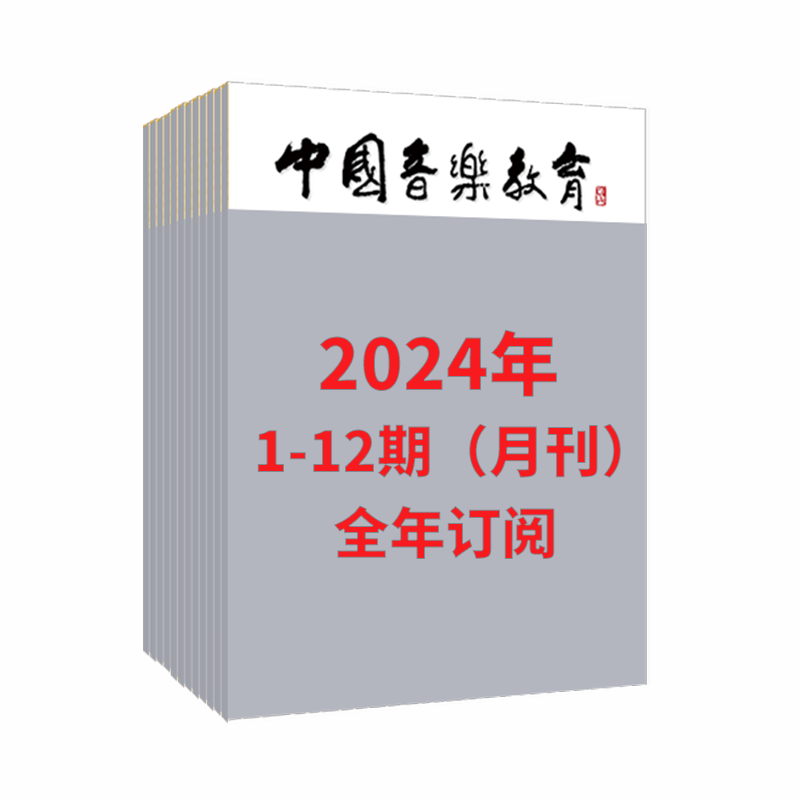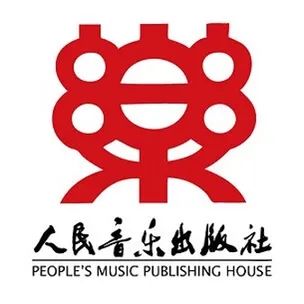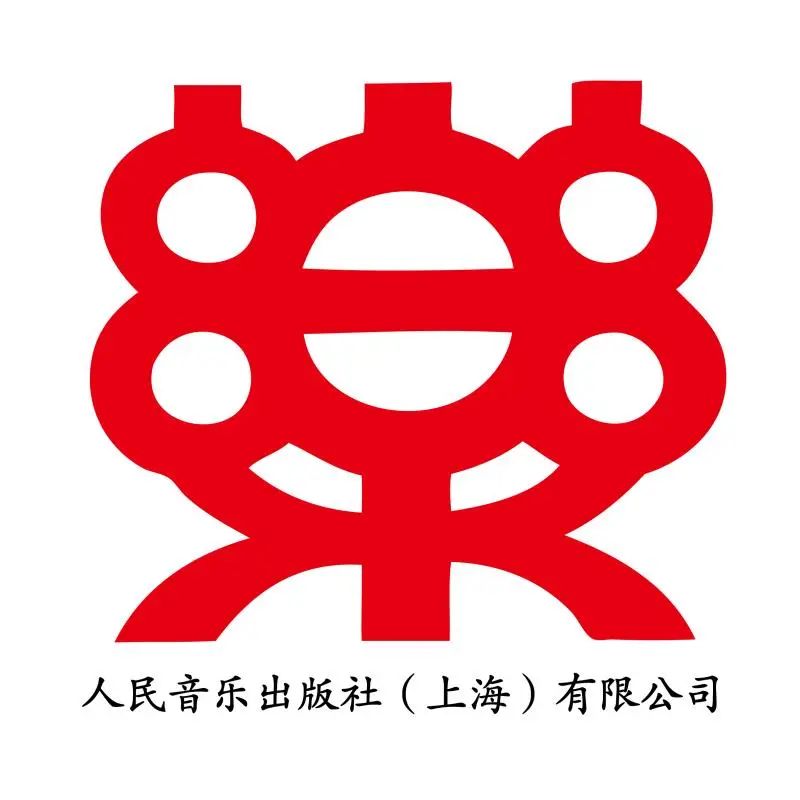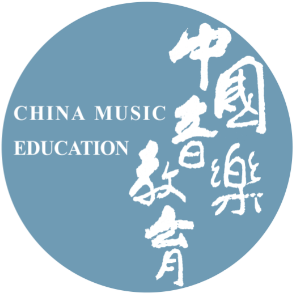(Original text published in “Chinese Music Education” 2024 Issue 1)
Abstract: Recently, generative artificial intelligence represented by “Chat GPT” has developed rapidly, significantly impacting various industries, including education. Generative AI mainly plays the role of a “large language model” with strong performance in generating “language”. Its potential lies in enhancing teachers’ course comprehension, students’ choice of learning strategies, addressing teachers’ lack of digital literacy, and broadening access to educational information and materials. However, it also poses risks such as increasing dependency, providing inaccurate materials, and weakening emotional connections between teachers and students. To mitigate these risks, measures should be taken to suppress the exclusive use of AI, avoid reductionist thinking, and prevent the decline of interpersonal relationships, thereby regulating the use of generative AI and promoting more harmonious human-computer interaction and further development of intelligent education.
Keywords: Generative Artificial Intelligence; Chat GPT; Educational Applications; Music Education; AI Risks
Introduction
At the beginning of 2023, the American AI research company Open AI launched a generative artificial intelligence called “Chat GPT” (Chat Generative Pre-trained Transformer), which possesses powerful generative capabilities in language. Within just two months of its launch, the user count exceeded 100 million, while domestic WeChat users reached over 100 million in 433 days. Although the logic and functionality of the two software differ, the popularity of Chat GPT and the considerable influence of generative AI cannot be underestimated. Additionally, several domestic internet companies have publicly announced the acceleration of generative AI research, indicating that generative AI similar to Chat GPT is one of the important trends in future social development. With the rapid development of generative AI, society is accelerating its intelligent iteration, and countless industries will be affected to varying degrees, including education.
Chat GPT exhibits outstanding performance in text generation, embedding core technologies such as encoder-decoder architecture, instruction fine-tuning, chain of thought techniques, and reinforcement learning based on human feedback, which will have a significant impact on the education sector and may even trigger profound changes from conceptual foundations to practical implementations. The personalized teaching customization work, historically constrained by technology, may now have broad opportunities for development. Humanity is currently in an era of technological prosperity, and when it is impossible to isolate the impact of generative AI on education, we should adopt a proactive attitude. This article will explore the potential and risks of generative AI represented by Chat GPT in the education field and music sector, and propose targeted regulatory pathways.
1. The Potential of Generative AI in Education
From an operational logic perspective, Chat GPT adopts the logic of “big data + strong learning”, rapidly scanning and receiving texts through its powerful information storage and learning capabilities, converting data into human-like language. Currently, generative AI similar to Chat GPT demonstrates potential in three main areas within education.
(1) From Scarcity to Abundance: Enhancing Teacher-Student Course and Strategy Comprehension through Human-Computer Interaction
Chat GPT is backed by powerful computing and data support, enabling it to perform batch personalized analyses that can impact teachers and students differently.
From the perspective of teachers, human-computer interaction can enhance teachers’ comprehension of courses. Generative AI presents a powerful personalized analytical ecosystem that can significantly improve teachers’ understanding of courses at different levels. In terms of detailed course theory, it actually stimulates teachers’ active comprehension of course levels. Goodlad’s curriculum theory outlines five levels of curriculum theory, with the comprehended curriculum occupying a crucial position. Simply put, the “comprehended curriculum” can be understood as the extent to which teachers implement their understanding of the curriculum in teaching design. In actual teaching, the elements of teaching design and creative points are often countless, but the creative flashes that teachers can capture are extremely limited. With the powerful computing power and openness of generative AI, the flexible mobilization of data and quick generation of resources enable teachers to access resources more conveniently in educational activities. The generative AI model library employs data storage and management technologies, allowing teachers to obtain richer materials and more widely accessible information, thus increasing the likelihood of designing excellent teaching plans. Moreover, this approach can promote teachers’ cognitive agency in the “comprehended curriculum” level, allowing them to identify and address shortcomings in teaching design, break free from misconceptions about curriculum understanding and design, and actively comprehend the curriculum.
In the context of music, generative AI can creatively meet various user needs by continuously changing text forms and content. For example, when teachers engage in lesson design, they often have needs for melody creation based on themes, action matching, or instrumentation, and the effectiveness of their creations largely depends on their understanding of the curriculum. Generative AI, with its powerful natural language processing technology, can generate not only text but also corresponding sheet music, simplified scores, rhythms, and even multi-voiced compositions based on requirements; it can provide more musical creativity for teachers based on the content required in formal courses, promoting the development of the “implemented curriculum” and enhancing teachers’ comprehension of courses through the integration of generative AI and music.
From the students’ perspective, human-computer interaction can enhance students’ strategic comprehension. The supercomputing power of AI can support personalized analysis of each student’s learning behavior in education, tailoring learning suggestions and plans to help students choose learning strategies that better fit their actual situations. McCall et al. identified “resource management strategies” from macro learning strategies, where resources include time, spatial environment, learning tools, etc. By sending specific learning situations to Chat GPT, students can receive effective resource management decision-making through the algorithm analysis and reasoning of generative AI.
For instance, in the music subject, sending a student’s music learning evaluation form to Chat GPT can yield corresponding resource management strategy suggestions, such as “spend more time learning rhythm”, “strengthen the use of learning tools (arrangement tools, scoring tools)”, and “immerse oneself in music spaces like concerts to experience music”. Furthermore, generative AI can assist students in employing “organizational strategies”. Organizational strategies emphasize integration, linking new knowledge with old knowledge to form new knowledge structures. By utilizing Chat GPT’s advanced natural language processing technology, students can send fragmented knowledge elements, and generative AI will quickly provide a reasonable knowledge framework, helping students establish an orderly knowledge system from complex materials.
In summary, generative AI similar to Chat GPT can achieve precise analysis of teaching facts based on different users’ preferences, meeting personalized needs in teaching, and providing convenience for both teachers and students. It can help teachers gain a deeper understanding of the requirements at various levels of the curriculum, promote diverse teaching innovations, and assist students in learning more effectively according to their actual situations. Thus, both teachers and students can enhance their agency in teaching and learning with the help of generative AI.
(2) From Inefficiency to Efficiency: Information Generation Provides “Literacy Support” for Teachers
In actual teaching processes, good teacher literacy ensures the smooth implementation of teaching activities, referring to the value of teachers’ teaching. In the intelligent era, data literacy has become one of the indispensable competencies for teachers. Data literacy primarily refers to the ability to effectively use data, tools, and representations, serving as a guarantee for teachers to utilize intelligent teaching materials and new technological devices in their teaching. Specifically, teachers inevitably use the “Office Suite”—Word, Excel, and PPT—during teaching, which, despite decreasing entry barriers, still requires teachers to invest time in learning and operating these professional tools.
Currently, generative AI has been integrated with professional tools like Word, Excel, and PPT, conveniently providing teachers with the teaching highlights they wish to showcase, including intelligent PPT generation, automatic addition of supplementary materials, rapid literature classification, and smart formatting adjustments. During lesson preparation, AI acts as a “third hand” for teachers, providing stronger support for their data literacy, helping optimize teaching and improve efficiency, allowing teachers to devote more energy to creative tasks and promoting the development of educational and research work.
In the field of music education, this specifically manifests as score production, audio production, and frequency presentation, enabling music teachers to invest more energy in creative practice, discover new concepts and methods in music education, and create more new musical works, thus advancing music education.
(3) From Narrow to Broad: Broadening Teacher-Student Cognitive Horizons and Resource Channels through Network Connectivity
Generative AI is backed by strong interconnectivity, allowing it to connect to the entire network, suitable for retrieving and presenting various educational resources, thereby expanding the cognitive horizons and resource channels for students and teachers.
Firstly, connecting to the entire network opens up cognitive spaces for teachers and students. For instance, Chat GPT possesses full-network information retrieval and presentation capabilities, significantly broadening the cognitive horizons of both students and teachers. In real scenarios, no teacher can resolve all questions, but with the powerful algorithms and interconnectivity of generative AI, as well as advanced data information mobilization technologies, existing educational information becomes readily accessible resources, and most of the questions faced by students and teachers can be answered through dialogue with AI. Through interaction with generative AI, the knowledge elements that students and teachers understand have broad spatial and temporal characteristics, providing more opportunities to learn about different knowledge elements and expand their cognitive horizons.
Secondly, the accurate results provided by generative AI can effectively avoid information overload. During usage, generative AI can continuously identify textual meanings, maintaining ongoing learning to provide teachers and students with accurate and rich resource channels. Traditional retrieval tools often present results mixed with a large amount of ineffective information, such as advertisements, out-of-context information, and unrelated recommendations, making it difficult for users to find effective and key information. In contrast, generative AI can accurately identify user needs and provide the necessary information and educational resources without mixing in advertisements or misleading information. This significantly broadens the channels and effectiveness of resource acquisition for teachers and students.
For example, in the music subject, many classical music recordings are old and difficult to obtain, or there may be issues with finding audio or video. Chat GPT can provide specific materials needed by music teachers based on different requirements, such as different versions, audio quality, visual quality, or even specific orchestras or conductors. Additionally, due to commercial development, traditional search engines often yield results mixed with numerous music advertisements and unnecessary information, making it easy to confuse similar-named works that are fundamentally different. Generative AI, however, filters out redundant information, accurately directing users to the results they need.
2. The Risks of Generative AI in Education
Despite the advantages of generative AI like Chat GPT, it cannot mask the fact that it is a “double-edged sword.” Scholars have pointed out ethical risks associated with AI from various dimensions, including subjectivity, relationships, algorithms, and resources. Specifically, these concerns include insufficient academic integrity, unstable information transmission, and unreliable ethical awareness. Overall, Chat GPT serves as both an “Aladdin’s lamp” and a “Pandora’s box,” with the latter primarily reflected in dependency, the “black box” of information, and the teacher-student relationship.
(1) Increasing Dependency: Deep Learning of Students Being Replaced
The widespread application of AI products may deviate from their original design intentions, negatively impacting subjects. Over-reliance on generative AI could lead to a situation where deep learning is replaced by AI-generated outcomes, which, if it occurs, will adversely affect the learning initiative and knowledge system integrity of the users.
On one hand, excessive reliance on AI will diminish users’ learning initiative. Prior to the popularity of generative AI, there were already reports indicating that students relying on homework search tools saw declines in academic performance, as the process of using these tools effectively turned learning into a passive replication process. The currently popular generative AI features, compared to traditional search tools, are even more comprehensive and detailed; a few simple dialogues can generate more thorough and complete answers, which inevitably impacts students’ learning initiative. Over time, students may develop a “technological inertia,” leading to a situation where they struggle to start without AI, gradually becoming “feeding machines” devoid of independent thinking abilities. If not addressed promptly, this could form a vicious cycle of “dependency—decreased learning initiative—over-reliance.”
On the other hand, excessive reliance on generative AI may compromise the integrity of students’ knowledge systems. Currently, students’ learning can be categorized into two main directions: receptive and discovery-based. Knowledge acquired through receptive learning is generally organized and logically structured by teachers, while discovery-based learning is the process where students, guided by teachers, uncover patterns and connections between phenomena. The knowledge established through this process tends to be relatively complete. However, knowledge obtained from Chat GPT is often disordered or exceeds the students’ cognitive levels. During dialogues with generative AI, students often find themselves waiting for AI responses, leading to diminished exploration of knowledge and a stagnation in constructing their knowledge frameworks, thus hindering the establishment of a complete knowledge system. Furthermore, the basic logic of generative AI is based on the inputs provided by users, and since students often send scattered questions, the information produced by AI is also fragmented, making it easy for students to have shallow memories of knowledge and hindering the formation of a complete knowledge system.
For example, in the music subject, when students send numerous questions to AI, their brains receive a large volume of AI-generated answers. As the number of questions and answers increases, the complexity of information received in a short time can overwhelm the brain, leading to confusion regarding music works. For instance, a low-level error might occur where a student mistakenly identifies Mozart as the composer of “Für Elise.” The information about music works should be contextualized with the composer’s historical background or actual musical events (concerts) to construct the corresponding knowledge framework. Given the vast quantity of music works and the various historical periods, simplistic Q&A formats are unlikely to help students develop deep understanding and memory, and they may easily lead to erroneous musical knowledge elements or loss of contextual historical background.
(2) Weak Reliability and Timeliness of Educational Materials: The Technical “Black Box” Behind Information Delivery
Due to the non-transparent algorithm logic behind generative AI, there exists a technical “black box” that may systematically produce false information. Firstly, the reliability of educational materials presented by AI is often ambiguous. Users engaging with AI only see the definitive answers it provides, but the algorithmic and cognitive processes remain unclear. The root cause lies in the fixed algorithm models designed by developers, where detailed technical parameters are not clearly defined, potentially leading to errors and conceptual confusions in the educational materials obtained from AI. Based on user experiences, AI can even fabricate non-existent references according to standards like national guidelines or APA format. In the educational field, using erroneous materials provided by AI for teaching is akin to inserting a “Trojan horse” into students’ knowledge systems, misleading them.
Secondly, the timeliness of information pushed by generative AI is often lacking. In education, it is essential to combine “timelessness” with current events. On one hand, “timelessness” refers to the eternalism curriculum theory, which asserts that the works represented by great authors and thinkers are unparalleled, such as classics, famous quotes, and fundamental theorems; on the other hand, timeliness pertains to the reflections prompted by current hot topics and the educational reforms brought about by the latest educational philosophies. Open AI has explicitly stated that Chat GPT’s knowledge only extends up to September 2021, meaning that knowledge developed after that date has not been incorporated into the model, relying instead on user-generated inputs for learning. However, the authenticity and accuracy of the information sent by users are often difficult to discern, exacerbating the risk of misinformation due to insufficient timeliness, especially in subjects that require alignment with cutting-edge knowledge.
In the music subject, with the increasing openness of education, the richness and output of music works have significantly increased, thus making the timeliness of music information critical. However, AI cannot access the latest music works quickly and may provide outdated information from its “old” knowledge base, hindering music education. Additionally, copyright is crucial in music; the information provided by Chat GPT operates within a “black box”, and the musical content presented may infringe on music copyrights.
(3) Obscuring the Core of Interpersonal Communication: Weakening Emotional Connections between Teachers and Students
Fundamentally, the teacher-student relationship is an interpersonal connection formed through mutual cognition, emotions, and communication during educational activities. The widespread rise of generative AI can easily weaken the core elements of interpersonal communication, disrupt normal teacher-student interactions, and alienate the teacher-student relationship. Firstly, from a cognitive perspective, it challenges the authority of teachers. With the advancement of AI technology, the dissemination and acquisition of knowledge have become more convenient. American educator John Dewey noted, “The method of acquiring knowledge in learning is more important than the knowledge itself.” The widespread use of generative AI has turned knowledge acquisition into a mechanical result, completely neglecting the importance of the learning process, and as teachers’ knowledge reserves are often inferior to those of AI, some students may believe that with AI, they no longer need teachers to obtain more and better knowledge. This situation arises from the neglect of the learning process’s importance, denying the professional status of teachers solely based on knowledge cognition.
Secondly, it increases the risk of emotional detachment between teachers and students. As mentioned earlier, generative AI can answer most questions, diminishing teachers’ role in resolving queries, leading to a weakening of the emotional bonds between teachers and students. When students face AI, which can replace many teachers’ functions without revealing its essence, they may see AI as a better and more powerful tool than teachers, and over time, students may reduce or even refuse to communicate and interact with teachers, harming normal teacher-student relationships and rendering them mechanical.
In the music subject, students can more conveniently obtain results for melody composition, work backgrounds, author information, form analysis, and harmonic structures from AI, making it difficult for them to patiently listen to teachers explain complex concepts like harmonic principles step by step. The essence of interpersonal communication lies in emotional empathy and intellectual exchange, while the emergence of generative AI turns the core of interpersonal communication into cold algorithms, inevitably leading to the alienation of teacher-student relationships.
3. Regulatory Pathways for the Risks of Generative AI Applications
In the future, the widespread development and application of generative AI like Chat GPT will be unstoppable. Establishing a good usage order and constructing a symbiotic bridge between education and AI is an important topic in current AI research.
(1) Suppressing Exclusive Use of AI: Promoting Educational Ecological Transformation and Implementing the Information + Teaching Philosophy
In the rapidly developing era of AI, it is essential to promote the healthy development of teaching ecology within the framework of “Information + Teaching.” Firstly, educational institutions such as schools should strive to facilitate the transformation of educational ecology, advancing information-based and digital education. Currently, adopting AI tools for intelligent learning and assisting in innovative tasks while creating conditions for positive interaction and collaboration with AI is likely to become a significant direction for the future of education. Therefore, schools should help students establish harmonious human-computer interaction models, cultivate their survival skills in the information age, and enhance their information judgment abilities to mitigate the adverse effects of the technological “black box.” At the same time, ethical issues should be regulated, and students’ self-discipline in using AI should be improved.
Secondly, General Secretary Xi Jinping emphasized during the National Education Conference in 2018 that the essence of education is to address the question of “what kind of people to cultivate,” which is the most concentrated and distinct manifestation of the essence of education. In the current rapidly developing AI landscape, we should focus on “nurturing people” and enhance teaching reflection capabilities through information technology, clarify individual competency positioning, and strengthen the value of education in nurturing individuals, emphasizing “ability” evaluation while downplaying simple knowledge and skill assessments, thus facilitating a smooth transformation of the educational ecology.
In the music subject, AI can assist students in completing tasks such as melody composition and action arrangement. However, if this is the endpoint, there are potential risks, particularly regarding insufficient creative elements and lack of nurturing quality. By guiding students to delve deeper into composition based on AI creations, increasing the input of human creativity, we can elevate the creative platform for students, guiding them to produce more and better creative works, thereby better realizing their creative practical literacy.
(2) Avoiding Reductionist Thinking: Enhancing Embodied Learning Experiences and Using Multiple Methods to Promote Deep Learning
As Merleau-Ponty stated, “The perceiving subject is not an absolute thinker; rather, it acts according to the inherent connections between our bodies and the world, as well as between ourselves and our bodies.” In other words, our understanding of the world is embodied and embedded within it, not merely “pure thought” as Descartes suggested. The author believes that education devoid of embodied experiences cannot deeply explore learning issues or engage in deep learning discussions. The influence of AI carries the risk of leading learning subjects towards “pure thought”. To counter this, teachers should enrich the teaching methods related to embodied experiences and help students gain more embodied learning. As early as 1916, Dewey proposed the educational concept of “learning by doing” in his book “Democracy and Education.” Today, over a century later, with the rapid development of AI, the risk of falling into “pure thought” is more pronounced, and educators should continue to uphold the theory of “learning by doing” to enhance students’ embodied learning. For instance, interdisciplinary thematic teaching and project-based learning can be widely implemented in classrooms.
In the music subject, teachers can conduct real-world teaching, such as having students listen to symphonies and engage in orchestra arrangement teaching, or providing more hands-on opportunities for students to explore the physical acoustic principles behind music phenomena through instrument-making activities. Such practical activities, like instrument construction, can be informed by AI but cannot replace the hands-on experience of students. This not only strengthens the embodied experience of students’ learning but also reduces their dependency on AI, returning the agency of deep learning to the students.
(3) Preventing the Decline of Interpersonal Relationships: Preserving the Core of Interpersonal Communication to Ensure Harmonious Teacher-Student Relationships
Interpersonal relationships are social relationships established through communication in daily life. Humans cannot exist apart from society and, therefore, cannot escape interpersonal interactions. The three essential elements of education include educators, learners, and educational influences, where both educators and learners are subjects of interpersonal communication. Thus, education is fundamentally an activity of interaction between subjects, encompassing knowledge transfer, emotional exchange, and intellectual collisions. To ensure harmonious teacher-student relationships, we must fundamentally safeguard the ability for spiritual communication between individuals.
We must recognize that technology is not an “omnipotent deity.” While technological advancements indeed offer compensatory effects, such compensations often only target a small portion of knowledge and information in educational activities. The work of educators transcends mere knowledge and information dissemination; it is a labor form characterized by emotionality and creativity that far exceeds the capabilities of AI. The emotionality and creativity of teachers manifest in understanding each student’s inner thoughts, recognizing their personality traits, and focusing on shaping their values and character, rather than only communicating with students in knowledge areas that are easily replaceable. Instead, we should strengthen communication with students across all dimensions, striving to be guides in their lives. Additionally, teachers bear the mission of addressing the challenges posed by AI, helping students who are overly reliant on AI navigate out of their dilemmas and into reality, providing them with more participatory and embodied experiences. In this way, we can better preserve the core elements of interpersonal communication and ensure the harmonious and stable development of teacher-student relationships.
Conclusion
In the near future, generative AI will undoubtedly be a trend in the intelligent development of education, continuously impacting teachers and students, educational elements, and teaching models. Compared to “Internet+” or the “metaverse”, generative AI offers more convenient usage, lower entry barriers, and richer intelligent forms. However, the emergence and application of any technology is not an isolated act, but a result of collaborative interactions, and generative AI is no exception. Its powerful functions are built upon the foundations of “Internet+” and the “metaverse”, establishing educational interconnectivity and constructing a diverse educational ecology. Thus, while we should continue to maintain the momentum of research on generative AI, we must also pay attention to the logical connections behind technology and the multidimensional collaborative effects within it.
Furthermore, we must continue to find ways to mitigate the risks posed by AI. The impact of AI on human society is a double-edged sword; whether it is a “Pandora’s box” or “Aladdin’s lamp” depends on the mindset of the user. In the educational field, we are already in a highly intelligent era, having birthed many modern talents, educational philosophies, and tools, with AI playing an indispensable role. However, as we face increasingly intelligent AI, we must maintain a discerning perspective, sharp thinking, and a rational attitude. On one hand, we must continue to adhere to the core educational philosophy of “what kind of people to cultivate”; on the other hand, we must use AI reasonably and continue to explore better teaching models and tools. Looking at the bigger picture, education is a crucial part of national development, but it should not be viewed in isolation; rather, it should be seen in the context of the overall development of the nation’s endeavors. Therefore, users should ethically and socially normatively enjoy the technological conveniences brought by AI, adopting a positive attitude to fully utilize AI and draw more developmental momentum from it, thus providing inexhaustible power for the prosperity of education in the age of intelligence.
Notes: omitted.
Author’s affiliation: China Conservatory of Music

Save the image below
Open Taobao on your phone and scan to subscribe to the 2024 magazine

Click the image below to go directly to the purchase link


“Chinese Music Education” Magazine
Submission Email:

People’s Music Publishing House New Media Matrix









Click “Share” below to tell TA
Click “Read the original text” below to subscribe to the electronic journal
↓↓↓